
China Public Holiday 2025 Schedule: Embracing the Year of the Snake
Just as the China Public Holiday 2024 Schedule has flown by, the arrival of 2025 makes it essential to understand the public holiday arrangements in Mainland China, the Hong Kong

Just as the China Public Holiday 2024 Schedule has flown by, the arrival of 2025 makes it essential to understand the public holiday arrangements in Mainland China, the Hong Kong
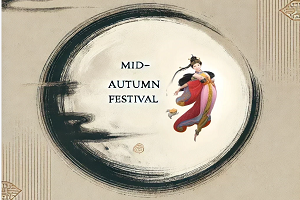
Introduction: The Chinese Mid-Autumn Festival, celebrated on the 15th day of the eighth lunar month, is one of the four major traditional Chinese festivals, alongside the Spring Festival, Qingming Festival,

Introduction: Today is China’s Qixi Festival, a fascinating traditional Chinese festival dedicated to love. China’s Qixi is celebrated on the seventh day of the seventh lunar month, which this year

引言: 在中国古代文化的浩瀚星座中,四大传统节日是非常出名的, 分别就是:春节、清明节、端午节和中秋节。恰好是今天,也就是在每年农历五月初五,正是端午节,也是中国法定节假日。虽然这个独特的节日的来历说法不一,但是最广泛的传说就是为了纪念“屈原”。他也是中国历史上,最早和最伟大的诗人,楚辞的开创者。在神话传说中,他就在这一天最终投汨罗江自尽。当时在身边所有的民众,一旦知道了,都乘着龙舟去寻找他。却再也找不到。于是,大家都又投米团入江河,以防鱼食屈原身体,形成吃粽子习俗。到了现在,几乎每个中国人在这一天吃粽子,也意味着中国端午节“拜神祭祖、祈福辟邪”的含义。那么,我们端午节的故事就开始了。 第一部分:“屈原”的“姓”,“氏”,“名”和“字” 为什么把他叫做为“屈原”?这个问题其实有点复杂。我来给大家解释下原因。 首先,我们要明白中国的古语,四个特殊词语,它们分别是:“姓”,“氏”,“名”和“字”。 早在人类2300年前,“屈原”这个诗人出现在了战国时代。准确来说, 他的氏为“屈”,名为“平”,字为“原”,但实际上,他的姓为“芈”,并不是“屈”。从甲骨文的含义,“芈”这个字,拼音读 mǐ。含义的意义就是羊的叫声。“芈”字也是非常古老的姓氏,也是周朝时楚国贵族的一个祖姓。那么“屈原”就出现了,他姓“芈”,氏“屈”,名“平”,字“原”。 为什么当时屈原明明姓“芈”,却没有人称呼他为“芈原”,却偏偏是“屈原”呢?这要从中国古代的”姓氏”文化开始说起。在当时,他的“氏”是“屈”,而不是“芈”,因为姓“芈”在当时只是称呼女性,而不是男性。 最早的”姓氏”,其实是分开的。而“姓”的历史更为悠久,早在母子社会就已经出现了。在母系社会里,孩子只知其母,不知其父。所以,孩子就以母亲的姓来代表自己的氏族。随着父系氏族社会的到来,男性氏族才真正的出现。在春秋时期,西周(前11世纪中期-前771年)建立分封制后,将诸侯都进行了分封。因此,也出现了性别婚姻。氏别贵贱的说法,也正式因为这些区别。所以古代的男子不称呼“姓”而称“氏”。而女姓正好相反。比如最近的电视剧《芈月传》就是这个“芈”,讲的就是战国时期楚国的“太后”,故事讲的就是女人的“姓”,而不是“氏”。比如屈原,我再重复一下,他姓“芈”,氏“屈”,“名”平,字“原”。而按照当时的习惯,作为男性可以称呼他为“屈原”,但绝对不是“芈原”。 “名”和“字”又有什么区别?其实很简单,如同“屈原”这个诗人,生前大家称呼他为“屈平”,选用的是他的名。但是当他去世后,我们都采用他的“字”来纪念他,所以我们喊他“屈原”。随着时间的演化,“姓氏”的关键的时间节点,就在秦汉以后,“氏”字也就慢慢的消失,而中华男女的姓氏也就真正的“合二为一”了。 当然,根据我个人的想法,作为中国人,到了今天,最好每个人都有“姓”“名”“子”,对于每一个人,都非常有意义。 第二部分:屈原的《离骚》和端午节的背后 在讨论屈原和中国端午节的故事时,我们不能不提到他的代表作《离骚》。这是一部伟大的文学作品,被誉为中国古代文学的瑰宝之一。尽管《离骚》是用古中文写成的,但它并不完全属于诗歌,而是介于散文和诗歌之间的韵文。它展现了屈原对人民的热爱和对理想的追求。 《离骚》一书最早收录在《楚辞》中,这是中国文学史上第一部浪漫主义诗歌总集。《楚辞》这部书不仅包含了屈原的作品,还包括了其他楚国诗人的作品。它的成书过程和文学价值在中国文学史上有着重要的地位。 《离骚》全篇通过屈原的第一人称叙述,表达了他对国家的忠诚和对理想的执着。在诗中,他用丰富的想象力和优美的语言,描绘了一个个神话故事和奇异景象,展现了他内心的痛苦和矛盾。 以下是《离骚》中的一段节选和钱锺书先生的英译版本: —————————————————————————————————————————————————— 长太息以掩涕兮,哀民生之多艰。 余虽好修姱以鞿羁兮,謇朝谇而夕替。 既替余以蕙纕兮,又申之以揽茞。 亦余心之所善兮,虽九死其犹未悔。 —————————————————————————————————————————————————— 钱锺书先生的英文翻译: I heaved a long sigh
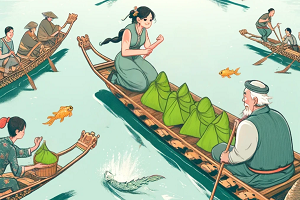
Introduction: In the vast constellation of ancient Chinese culture, four traditional festivals stand out prominently: the Spring Festival, the Qingming Festival, the Dragon Boat Festival, and the Mid-Autumn Festival. Today,
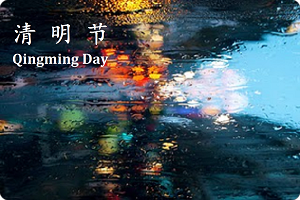
引言: 今天,就是2024年4月4日,也是很特殊的日子,正是中国的“清明节”,国家法定节假日。这个节日的英文被许多人都翻译成Chinese Tomb Sweeping Day,The Pure Brightness Day of China,或者是Chinese All Souls’ Day,但实际上,我觉得最为合适的就是音译的Qingming Day,也是有着最重要象征意义。就像唐代诗人杜牧当时写下的这首诗《清明》: 清明时节雨纷纷,路上行人欲断魂。 借问酒家何处有,牧童遥指杏花村。 如果用汉语来念,真的非常好听而且忧伤。当然,这首诗的含义和想表达的,就是说在清明节的一天,雨下的不停,路上的行人都神色愁闷黯然。我非常扫兴,想一个人喝一杯酒。找一个酒家来避雨。我向一位牧童打听?他指着遥远的地方,说了是“杏花村”。哦,原来还是“它”?当然,最后面的翻译是没有出现在诗文里面的,可是所有听到这首诗的人,一听就明白,因为“杏花村”就是每个人的想象。 下面,我来告诉大家,什么才是中国的清明节。 第一部分:为什么叫做“清明节”? 中国传统的清明节大约始于周代,已有二千五百多年的历史。清明最开始是一个很重要的节气,清明一到,气温升高,正是春耕春种的好时节。 后来,由于清明与寒食的日子接近,而寒食是民间禁火扫墓的日子,渐渐的,寒食与清明就合二为一了,而寒食既成为清明的别称,也变成为清明时节的一个习俗,清明之日不动烟火,只吃凉的食品。 到了清朝光绪年间,《岁时百问》中旧有谚语,那就是:“万物生长此时,皆清洁而明净,故谓之清明。” 的确,这个句子得到了所有华人想表达内心的含义。 在今天,与节期甚近的“上巳、寒食”两节合一。由于中国广大地区有在清明节附近进行扫墓、祭祖、郊游的习俗,逐渐演变为华人以扫墓、祭拜等形式纪念祖先的一个中华传统节日。 第二部分:在中国,什么是寒食节和清明节? 寒食节和清明节在历史上是两个紧密相连但又有所区别的节日。起初,寒食节主要是为了纪念忠臣介子推而设立的节日,主要习俗是禁火吃冷食,其特点是在这一天,人们不使用火炉,不生火做饭,而是吃冷食。而清明节则主要是祭祖扫墓、踏青的节日。随着时间的推移,这两个节日的时间相近,习俗和活动也开始相互融合。 寒食节的故事 传说在春秋时期,晋国有一位名叫介子推的忠臣,因为帮助晋文公重获王位而被赠予了一块肥沃的土地。后来,晋文公忘记了介子推的功绩,而介子推也不愿意去提醒晋文公。他选择隐居山林,不再出仕。晋文公后悔,想要找回介子推,派人放火烧山,希望逼他出来。介子推为了表示自己宁死不屈的决心,抱着他的母亲投火自焚。晋文公得知后非常悲痛,下令国中禁火三天,以纪念介子推的忠诚。从此,人们便在每年的这一天吃冷食,不生火,以纪念介子推,这就是寒食节的起源。 寒食节到了清明节 东汉末年,因为寒食节禁火的习俗已经在民间广泛流行,人们在这一天不仅禁止生火做饭,还会进行扫墓、祭祖等活动。到了唐宋时期,寒食节已经成为了一个固定的节日,其习俗和意义进一步丰富,包括了纪念忠诚、孝道以及春天踏青、放飞风筝等活动。

Introduction: Today, April 4, 2024, marks a special day – it’s the Qingming Festival in China, a national public holiday. This festival is often translated into English as Chinese Tomb

As 2024 approaches, understanding the public holiday arrangements in Mainland China, the Hong Kong Special Administrative Region, and the Macau Special Administrative Region becomes crucial for everyone. Whether you plan
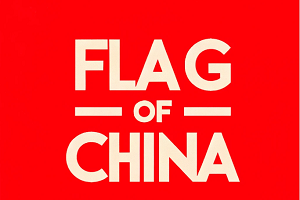
Introduction: The subject of the “Flag of China” is profound and unique, transcending merely a symbol of a nation to delve into the rich tapestry of China’s history and culture.
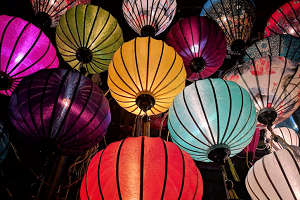
In China, after the Spring Festival comes the first significant festival, the Lantern Festival, known as “元宵节” (Pinyin: Yuánxiāo Jié). This festival marks the last major celebration of the Chinese

Just as the China Public Holiday 2024 Schedule has flown by, the arrival of 2025 makes it essential to understand

Introduction: The Chinese Mid-Autumn Festival, celebrated on the 15th day of the eighth lunar month, is one of the four

Introduction: Today is China’s Qixi Festival, a fascinating traditional Chinese festival dedicated to love. China’s Qixi is celebrated on the

引言: 在中国古代文化的浩瀚星座中,四大传统节日是非常出名的, 分别就是:春节、清明节、端午节和中秋节。恰好是今天,也就是在每年农历五月初五,正是端午节,也是中国法定节假日。虽然这个独特的节日的来历说法不一,但是最广泛的传说就是为了纪念“屈原”。他也是中国历史上,最早和最伟大的诗人,楚辞的开创者。在神话传说中,他就在这一天最终投汨罗江自尽。当时在身边所有的民众,一旦知道了,都乘着龙舟去寻找他。却再也找不到。于是,大家都又投米团入江河,以防鱼食屈原身体,形成吃粽子习俗。到了现在,几乎每个中国人在这一天吃粽子,也意味着中国端午节“拜神祭祖、祈福辟邪”的含义。那么,我们端午节的故事就开始了。 第一部分:“屈原”的“姓”,“氏”,“名”和“字” 为什么把他叫做为“屈原”?这个问题其实有点复杂。我来给大家解释下原因。 首先,我们要明白中国的古语,四个特殊词语,它们分别是:“姓”,“氏”,“名”和“字”。 早在人类2300年前,“屈原”这个诗人出现在了战国时代。准确来说, 他的氏为“屈”,名为“平”,字为“原”,但实际上,他的姓为“芈”,并不是“屈”。从甲骨文的含义,“芈”这个字,拼音读 mǐ。含义的意义就是羊的叫声。“芈”字也是非常古老的姓氏,也是周朝时楚国贵族的一个祖姓。那么“屈原”就出现了,他姓“芈”,氏“屈”,名“平”,字“原”。 为什么当时屈原明明姓“芈”,却没有人称呼他为“芈原”,却偏偏是“屈原”呢?这要从中国古代的”姓氏”文化开始说起。在当时,他的“氏”是“屈”,而不是“芈”,因为姓“芈”在当时只是称呼女性,而不是男性。 最早的”姓氏”,其实是分开的。而“姓”的历史更为悠久,早在母子社会就已经出现了。在母系社会里,孩子只知其母,不知其父。所以,孩子就以母亲的姓来代表自己的氏族。随着父系氏族社会的到来,男性氏族才真正的出现。在春秋时期,西周(前11世纪中期-前771年)建立分封制后,将诸侯都进行了分封。因此,也出现了性别婚姻。氏别贵贱的说法,也正式因为这些区别。所以古代的男子不称呼“姓”而称“氏”。而女姓正好相反。比如最近的电视剧《芈月传》就是这个“芈”,讲的就是战国时期楚国的“太后”,故事讲的就是女人的“姓”,而不是“氏”。比如屈原,我再重复一下,他姓“芈”,氏“屈”,“名”平,字“原”。而按照当时的习惯,作为男性可以称呼他为“屈原”,但绝对不是“芈原”。 “名”和“字”又有什么区别?其实很简单,如同“屈原”这个诗人,生前大家称呼他为“屈平”,选用的是他的名。但是当他去世后,我们都采用他的“字”来纪念他,所以我们喊他“屈原”。随着时间的演化,“姓氏”的关键的时间节点,就在秦汉以后,“氏”字也就慢慢的消失,而中华男女的姓氏也就真正的“合二为一”了。 当然,根据我个人的想法,作为中国人,到了今天,最好每个人都有“姓”“名”“子”,对于每一个人,都非常有意义。 第二部分:屈原的《离骚》和端午节的背后 在讨论屈原和中国端午节的故事时,我们不能不提到他的代表作《离骚》。这是一部伟大的文学作品,被誉为中国古代文学的瑰宝之一。尽管《离骚》是用古中文写成的,但它并不完全属于诗歌,而是介于散文和诗歌之间的韵文。它展现了屈原对人民的热爱和对理想的追求。 《离骚》一书最早收录在《楚辞》中,这是中国文学史上第一部浪漫主义诗歌总集。《楚辞》这部书不仅包含了屈原的作品,还包括了其他楚国诗人的作品。它的成书过程和文学价值在中国文学史上有着重要的地位。 《离骚》全篇通过屈原的第一人称叙述,表达了他对国家的忠诚和对理想的执着。在诗中,他用丰富的想象力和优美的语言,描绘了一个个神话故事和奇异景象,展现了他内心的痛苦和矛盾。 以下是《离骚》中的一段节选和钱锺书先生的英译版本: —————————————————————————————————————————————————— 长太息以掩涕兮,哀民生之多艰。

Introduction: In the vast constellation of ancient Chinese culture, four traditional festivals stand out prominently: the Spring Festival, the Qingming

引言: 今天,就是2024年4月4日,也是很特殊的日子,正是中国的“清明节”,国家法定节假日。这个节日的英文被许多人都翻译成Chinese Tomb Sweeping Day,The Pure Brightness Day of China,或者是Chinese All Souls’ Day,但实际上,我觉得最为合适的就是音译的Qingming Day,也是有着最重要象征意义。就像唐代诗人杜牧当时写下的这首诗《清明》: 清明时节雨纷纷,路上行人欲断魂。 借问酒家何处有,牧童遥指杏花村。 如果用汉语来念,真的非常好听而且忧伤。当然,这首诗的含义和想表达的,就是说在清明节的一天,雨下的不停,路上的行人都神色愁闷黯然。我非常扫兴,想一个人喝一杯酒。找一个酒家来避雨。我向一位牧童打听?他指着遥远的地方,说了是“杏花村”。哦,原来还是“它”?当然,最后面的翻译是没有出现在诗文里面的,可是所有听到这首诗的人,一听就明白,因为“杏花村”就是每个人的想象。 下面,我来告诉大家,什么才是中国的清明节。 第一部分:为什么叫做“清明节”? 中国传统的清明节大约始于周代,已有二千五百多年的历史。清明最开始是一个很重要的节气,清明一到,气温升高,正是春耕春种的好时节。

Introduction: Today, April 4, 2024, marks a special day – it’s the Qingming Festival in China, a national public holiday.

As 2024 approaches, understanding the public holiday arrangements in Mainland China, the Hong Kong Special Administrative Region, and the Macau

Introduction: The subject of the “Flag of China” is profound and unique, transcending merely a symbol of a nation to

In China, after the Spring Festival comes the first significant festival, the Lantern Festival, known as “元宵节” (Pinyin: Yuánxiāo Jié).
Be the first to know about the latest News & legal information
E-mail: service@gwbma.com
Location: Level 2, Huadian Building No.839, Guozhan Rd., Pudong Dist., Shanghai, China.